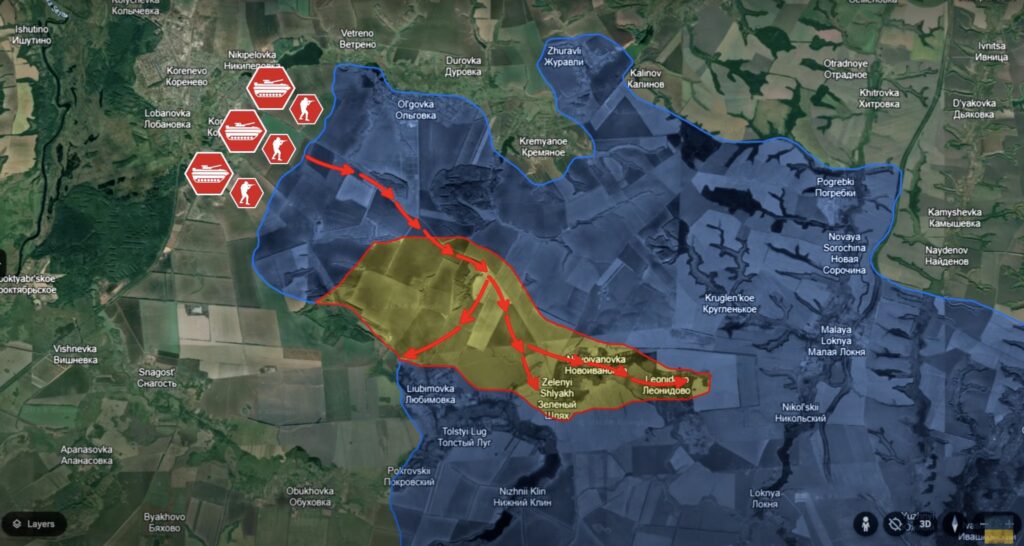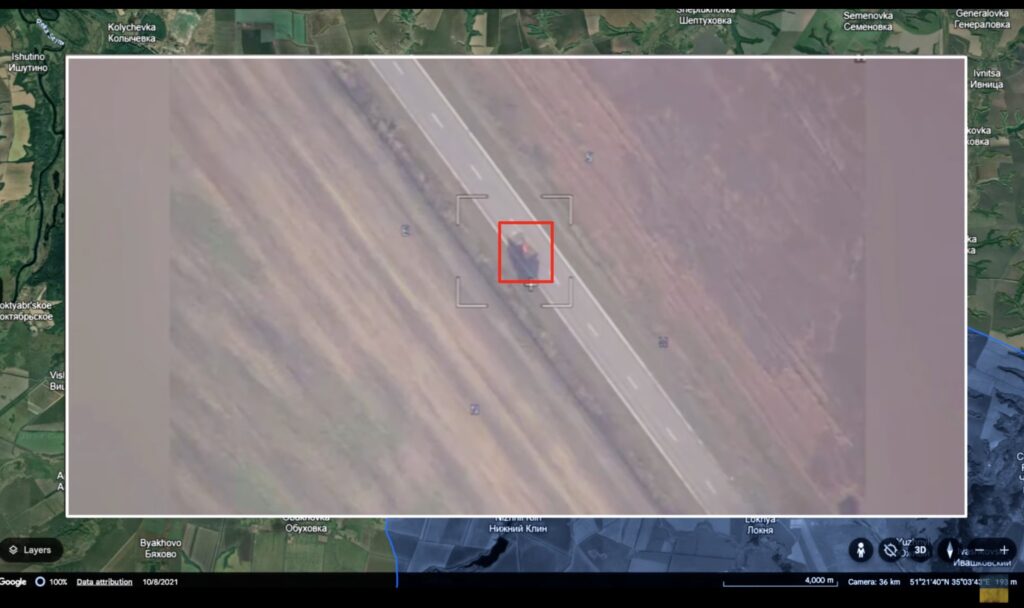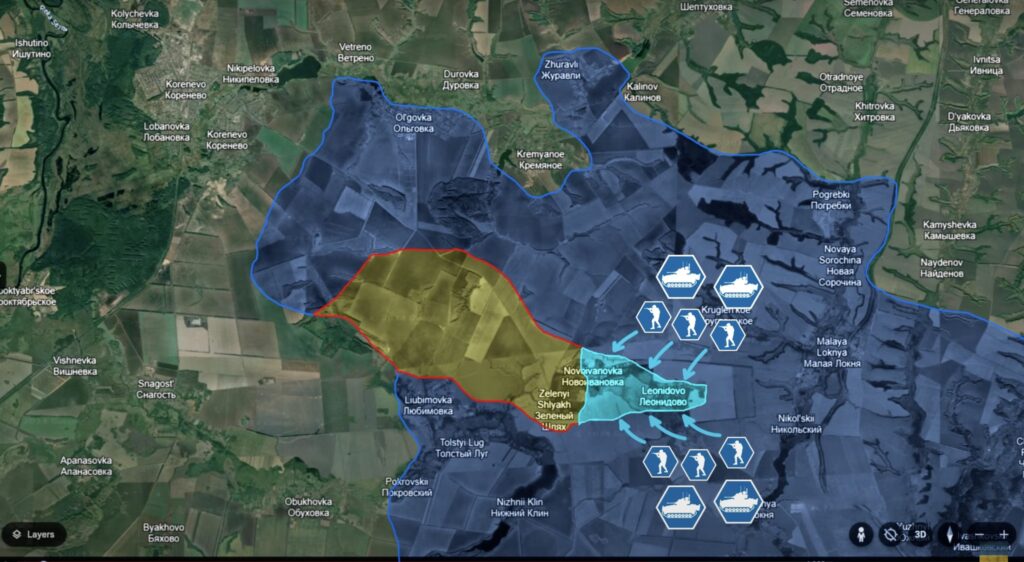Frontline report: Ukraine counters Russian gains in Kursk, reclaims 5km of lost territory
Despite being outnumbered 3-to-1, Ukrainian forces swiftly retook two towns in Kursk Oblast after the Russians advanced 10 km.


Today there are a lot of updates from the Kursk direction in Russia.
Here, after over a month of accumulating additional forces since the last counterattack, Russians once again decided to assault Ukrainian positions, penetrating the western flank by 10 kilometers.
The Ukrainian command, understanding the danger of a potential Russian breakthrough in Kursk, immediately initiated counterattacks to destroy overextended Russian forces, shaving off more than 5 kilometers already.
After retaking control of Snagost and nearby areas, the element of surprise faded, prompting Russian assault units to reinforce for a second counteroffensive wave.
To support this, Russian command increased troop numbers in the region from 30,000 to 50,000. This significant boost to their counteroffensive will shift the dynamics of the fighting in Kursk, where Russian forces now outnumber Ukrainians by at least three to one. These reinforcements were made possible by redeploying troops from Kupiansk, Chasiv Yar, Toretsk, and other areas, weakening Russia’s offensive efforts there.
With many forces redeployed, the Russians concentrated their offensive in Kursk, deploying armored columns along the Korenevo-Sudzha highway toward Zeleni Shlyakh. This settlement sits at a vital road intersection, key to Ukrainian supply routes for the nearby villages of Lyubimovka, Tolstyi Lug, and Novoivanovka. Securing both the village and intersection would enable Russian forces to either assault the semi-encircled Ukrainian positions in these villages or force them to retreat.
Russian forces chose to advance directly along the highway, as the frontline in this area was undefined. Ukrainian troops primarily concentrated their defenses within towns rather than open terrain, where trenches and fortifications were not built for sustained defense.
Combat footage shows a Russian column of over 30 armored vehicles advancing along the highway unopposed. They swiftly entered and captured Zeleni Shlyakh and the key road intersection. However, this success came at a cost, as Ukrainian officers confirmed that 15 of the 30 Russian armored vehicles were destroyed during the assault.

Worsening the situation, the Russian ten-kilometer advance bypassed the main Ukrainian defenses, reaching the rear near the intersection where Ukrainian drone operators were stationed. This allowed Russian stormtroopers to capture nine operators who were unaware of the enemy’s approach. Ultimately, Russian forces reclaimed a large portion of the Korenevo-Sudzha highway, along with Zeleni Shlyakh, Novoivanivka, and half of Leonidovo.
Despite advancing ten kilometers, the Russians stretched their lines over nearly thirty kilometers, placing them in a precarious position. This advance created a cauldron, with Ukrainian forces positioned in Olgovka and Matveevka to the north and Liubymovka to the south, forming a trap resembling dragon jaws.
From these favorable positions, Ukrainian troops launched counterattacks aimed at cutting off Russian forces along the highway, attempting to encircle and destroy the assault group at Zeleni Shlyakh by closing the dragon jaws around them.
Immediately after the Russian breakthrough, Ukrainian forces launched a counterattack, retaking Leonidovo and Novoivanivka, reclaiming nearly five kilometers of Russian gains. This demonstrated that Ukrainian forces retained their offensive capability despite the heavy Russian assault, while the Russians, having suffered significant losses, struggled to hold their positions.

With 50% of their vehicles and troops lost, the Russian assault group is unlikely to recover due to their vulnerable positioning. Meanwhile, Ukrainian forces in Olgovka, Matveevka, and Lyubimovka, which endured minimal damage, can target the highway supplying Russian troops in Zeleni Shlyakh. With no reinforcements yet for their losses, the Russian forces are at risk of encirclement, destruction, and collapse unless they intensify assaults on their flanks.
Overall, Ukrainian forces successfully stalled Russian offensives in Kharkiv, Chasiv Yar, Toretsk, and other key fronts by forcing the redeployment of over 50,000 Russian troops to Kursk.
Notably, Ukrainian soldiers had estimated they could hold Chasiv Yar only until the end of summer, but the Kursk operation stopped Russian advances completely there for over 3 months. While Russia’s recent gains in Kursk are significant, they have overextended leaving themselves vulnerable to a coordinated Ukrainian counterattack that could push them back and close the dragon jaws.
Future developments will hinge on Russia’s ability to stabilize their flanks and replenish losses while Ukraine must secure its supply lines to the towns north and south of the Russian advance to prepare for further counterattacks.
In our regular frontline report, we pair up with the military blogger Reporting from Ukraine to keep you informed about what is happening on the battlefield in the Russo-Ukrainian war.


